For over fifty years, the Canadian River Municipal Water Authority has worked to serve its member cities and all citizens of the Texas Panhandle and South Plains by providing a dependable and safe source of municipal and industrial water. The following chronology is a record of the major events which occurred during this endeavor:
1947: Project supporters requested a study by U.S. Bureau of Reclamation (USBR).
1949: USBR Reconnaissance Report finds of the Project could be developed. Authorizing legislation for the Canadian River Project was introduced in Congress.
1950: Public law 898-81 passed Congress, authorizing Canadian River Project. Signed into law by President Harry S. Truman on December 29. Canadian River Compact signed by representatives of Texas, Oklahoma, & New Mexico.
1952: A. A. Meredith resigned as Borger City Manager to promote the Project. Congress ratified the Canadian River Compact.
1953: Texas legislature created the Canadian River Municipal Water Authority (CRMWA). First meeting of Authority’s Board of Directors held on October 5. C.A. Huff (Pampa) elected President; Robert E. Maxey (Lubbock) Vice President. On November 24, eleven member cities confirmed creation of CRMWA at elections.
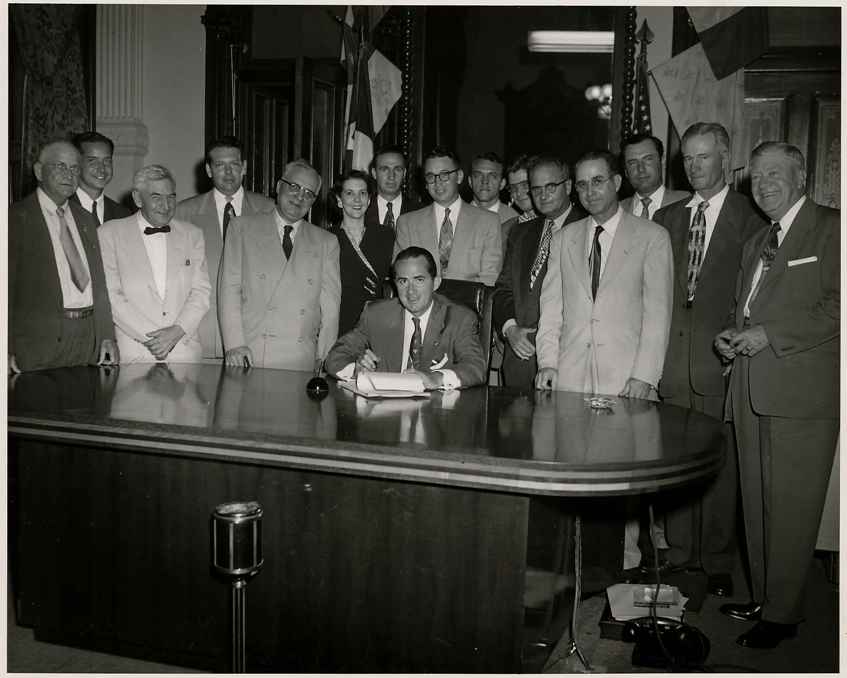
Governor Allan Shivers signs SB 126 to create CRMWA
Accompanied by Panhandle Plains delegates & A.A. Meredith (far right)
1954: CRMWA Directors decided to investigate financing by revenue bonds. Robert E. Maxey elected President; George Finger (Borger) Vice President.
1955: Legislature amended Enabling Act to allow title to dam to stay with United States and inserted a provision that any city failing to pass a water supply contract would be dropped as a member. Amarillo and Pampa withdrew as member cities. Bond elections approved sale of $74,800,000 bonds to serve nine cities.
1956: Elections were held in the nine cities to approve Water Supply Contracts. Plainview failed to approve its contract and was thereby dropped as a member. Texas Board of Water Engineers approved Permit to impound and divert water. Member cities unsuccessfully sought other customers for Project water.
1957: Returned to Federal financing; Amarillo, Pampa, and Plainview asked to rejoin. W. Howard Hoffman (Slaton) elected President; Finger remains Vice President. Enabling Act amended to allow non-uniform water rates and to require unanimous votes to set rates and charges for water service. Amarillo, Pampa, and Plainview voted themselves back into the Authority.
1958: Reclamation presented revised cost estimates.
1960: Member cities reached agreement on the allocation of costs and water. USBR revised cost estimate to $96,090,000. Contract with USBR signed on November 28.
1961: Contracts with ten cities signed on January 9 (Lamesa contract signed on September 11).
1962: Construction began. Groundbreaking for the Sanford Dam was held on June 30. In September, George Finger of Borger was elected President, and Ray Renner of Lamesa Vice-President. Available supply of water from Lake Meredith was estimated to be 103,000 Acre-feet per year.
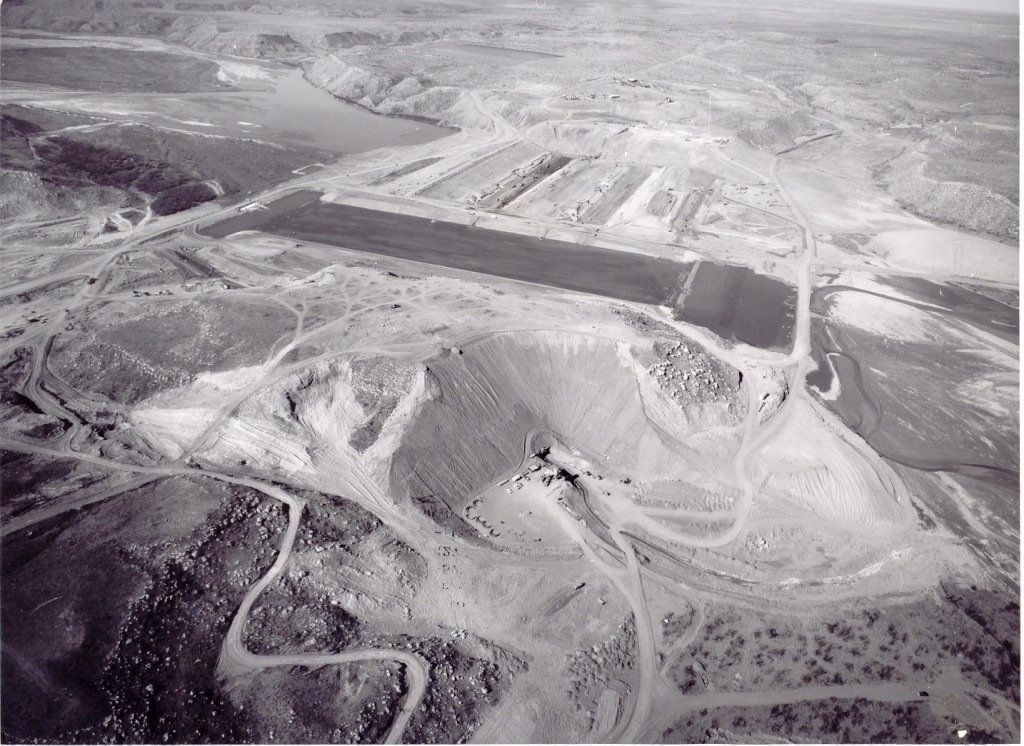
Construction of Sanford Dam
1963: A.A. Meredith died on April 13.
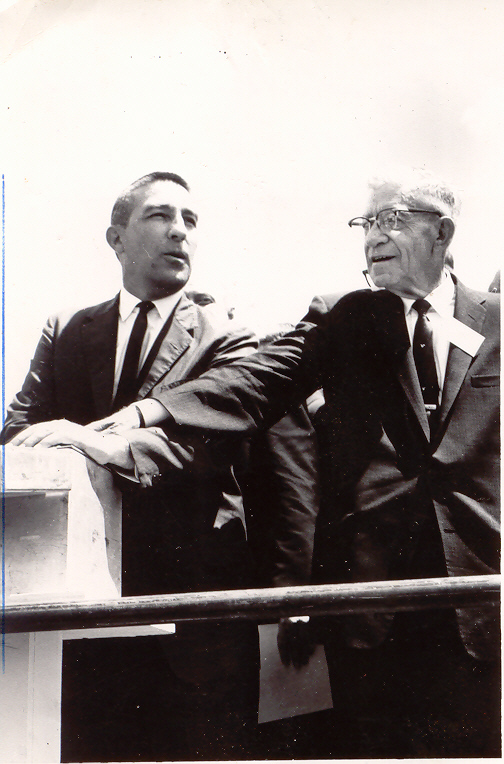
Interior Secretary Stewart Udall & A.A. Meredith set off explosives to initiate construction of Sanford Dam
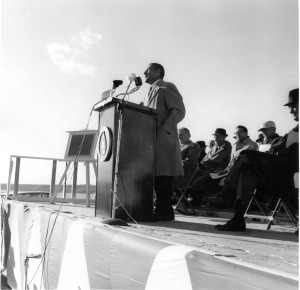
Ground Breaking Ceremony
1965: Storage of water in Lake began. National Park Service designated to manage recreation. Alibates Flint Quarries National Monument created by Congress. In June, inflow to the Lake increased storage to 158,000 acre-feet. Lake officially named Lake Meredith to honor A.A. Meredith.
1966: Last joint of pipe for Canadian River Aqueduct laid south of Lubbock. Sanford Dam and Lake Meredith dedicated November 1.
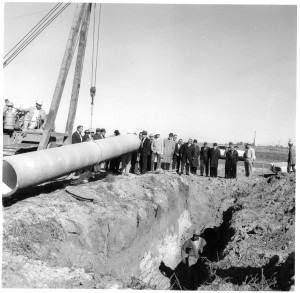
Workers placing last joint of pipe for Canadian River Aqueduct Dedication of Sanford Dam and Lake Meredith November 1, 1966
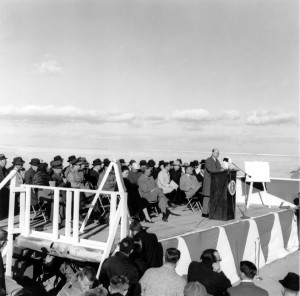
Dedication of Sanford Dam and Lake Meredith November 1, 1966
1967: In October, John C. Williams named General Manager effective July 1, 1968. In December, Project facilities were declared ready to deliver water in 1968. Preliminary Final Cost Notice issued by USBR, cost at $84,605,000 of which all but $4,912,000 was reimbursable. Interest during construction made the reimbursable obligation a total of $84,820,440.
1968: On April 1, normal deliveries of water began. On July 1, operation and maintenance of the Project was transferred to CRMWA.
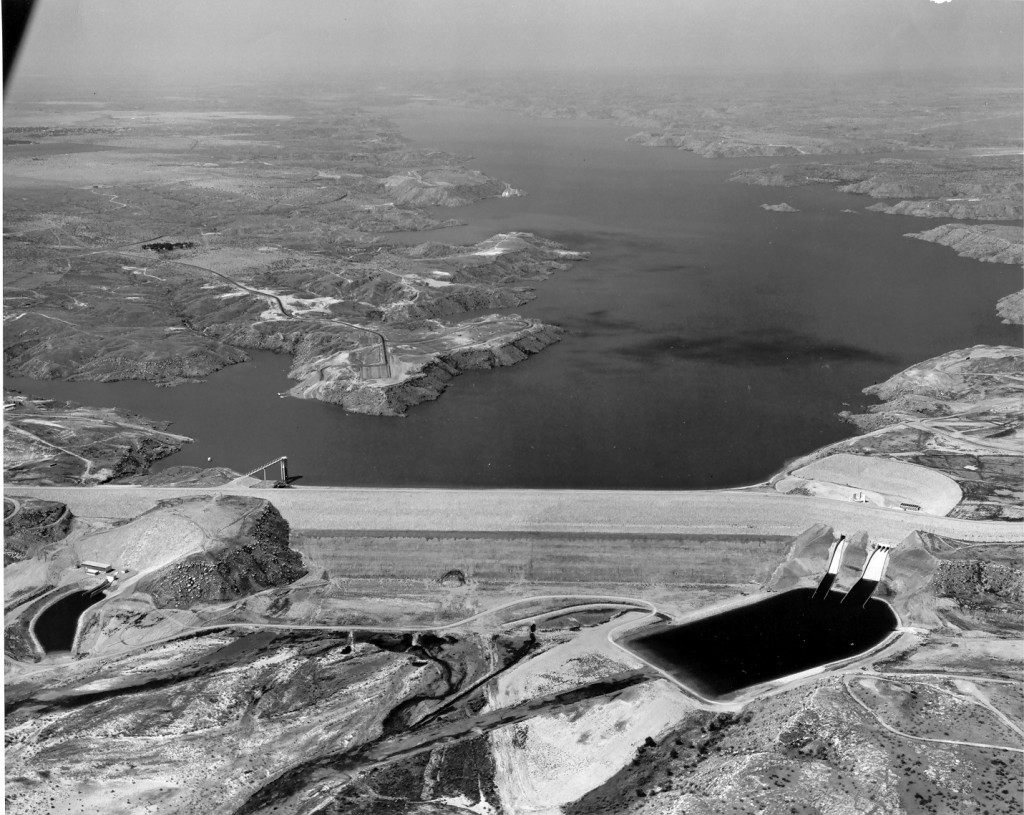
Sanford Dam Looking Upstream
1969: First payment made on debt to USBR in the amount of $2,014,060.
1971: Salt springs located downstream from Ute Dam, near Logan, New Mexico, a Federal study of brine inflows was requested.
1972: Amarillo, Borger, and Pampa filed suit on CRMWA and other Cities over operation and maintenance rates.
1973: Lake Meredith reached a depth of 101.9 feet, storing 540,000 acre-feet.
1974: Visitation to Lake Meredith for the year was 1,732,221.
1975: Final Cost Notice issued by USBR, obligation set at $83,358,280.21.
1977: USBR reported finding a shallow brine aquifer near Logan, New Mexico. On October 12, a manual was adopted to determine the cost for delivery of water to the Cities and the operation and maintenance rate lawsuit was resolved.
1978: Ray Renner (Lamesa) elected President; Mr. Jack Skaggs (Plainview) Vice President.
1979: USBR reported that saline inflow could be controlled by pumping from wells.
1981: Lake Meredith reached a low level of 63.16 feet on May 28.
1982: Jack Skaggs (Plainview) elected President; E.R. Moore (O’Donnell) Vice President.
1983: Ute Dam in New Mexico enlarged to store 279,000 acre-feet, potentially reducing water inflow to Lake Meredith.
1984: USBR reported settlement of outstanding construction claims, adding $338,000 to payment obligation.
1986: USBR Technical Report issued with plan to control brine inflows.
1987: Texas and Oklahoma filed suit on New Mexico over Ute Dam enlargement. Texas Legislature amended Enabling Act to allow for Salinity Control. Engineering study reported firm yield of Lake Meredith to be 76,000 acre-feet per year.
1989: Efforts to authorize Salinity Control Project “bottled up” in Congress.
1990: Lake Meredith designated a National Recreation Area.
1992: E.R. Moore (O’Donnell) elected President, Norman Wright (Plainview) Vice President. Grant from Texas Water Development Board for Alternate Water Supply Study approved. Congress authorized the Lake Meredith Salinity Control Project (LMSCP), providing for USBR to design and supervise construction, and for CRMWA to pay for construction and to operate and maintain the Project after completion.
1993: Texas Legislature appropriated $3,000,000 matching funds for LMSCP. Three Member Cities expressed interest in obtaining groundwater supplies. The Supreme Court ruled in favor of Texas and Oklahoma in the Canadian River Compact suit against New Mexico.
1994: The Board of Directors approved purchase of 42,765 acres of water rights, pending approval of the Member Cities.
1996: In January, the Panhandle Groundwater Conservation District (PGCD) issued a revised permit for 40,000 acre-feet pumping per year and the CRMWA Board accepted and approved an amended time-line for purchasing Roberts County water rights. $19,500,000 in revenue bonds for investigation and purchase of water rights were sold and the purchase closed on August 13. In October, Congress passed a drought relief measure crediting $4,000,000 on the Authority’s debt to USBR and deferring remaining payments for three years.
1997: In February, USBR advised that CRMWA needed permission to transport groundwater in the Canadian River Aqueduct. The CRMWA Board authorized filing suit, seeking legislation, or combining the original and groundwater project to obtain the needed clearances.
1999: On February 2, $3,605,000 bonds were sold to finance the LMSCP construction. On May 25, the USBR debt was paid with $34,806,731 in bonds to pay the discounted $52,207,015 debt, along with cash from Lubbock. CRMWA received title to the aqueduct. Bids for the major components of the Groundwater Supply Project were taken on September 9. Injection Well No. 1 for the LMSCP was completed on September 14. On September 15, issuance of bonds in the amount of $52,825,000 was approved to retire the 1996 bonds and to finance construction of the ground water project, along with cash from Lubbock and O’Donnell.
2000: On March 22, groundbreaking for the Groundwater Supply Project was held in a special meeting in Pampa. The Directors unveiled a plaque dedicating the Project and naming the facilities “The John C. Williams Aqueduct and Wellfield.”
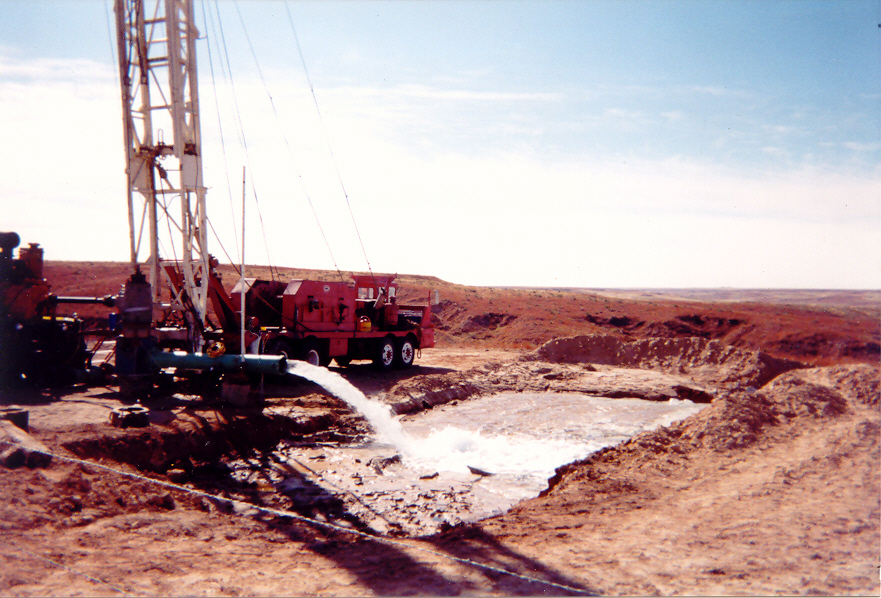
Testing wells in Roberts County
2001: The Authority filed a protest against applications filed by Mesa Water and others seeking permits for water production in the areas near the Authority’s wellfield. Landowners affiliated with Mesa filed a suit against CRMWA alleging that a Takings Impact Assessment was not adopted. The LMSCP was placed in operation in September, producing water from seven wells and injecting at a rate of 250 gpm. In November, John Williams retired as General Manager and Secretary/Treasurer. The CRMWA Board selected Kent Satterwhite as General Manager and Secretary/Treasurer. The John C. Williams Aqueduct and Wellfield was placed in operation in December, providing about 35% of the total water demand of Authority Cities.
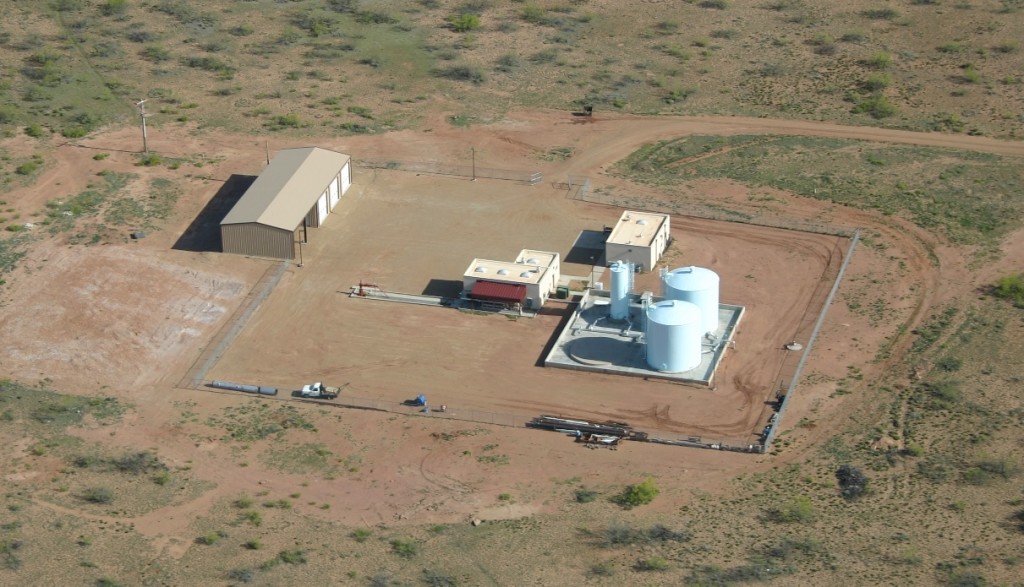
LMSCP Facility
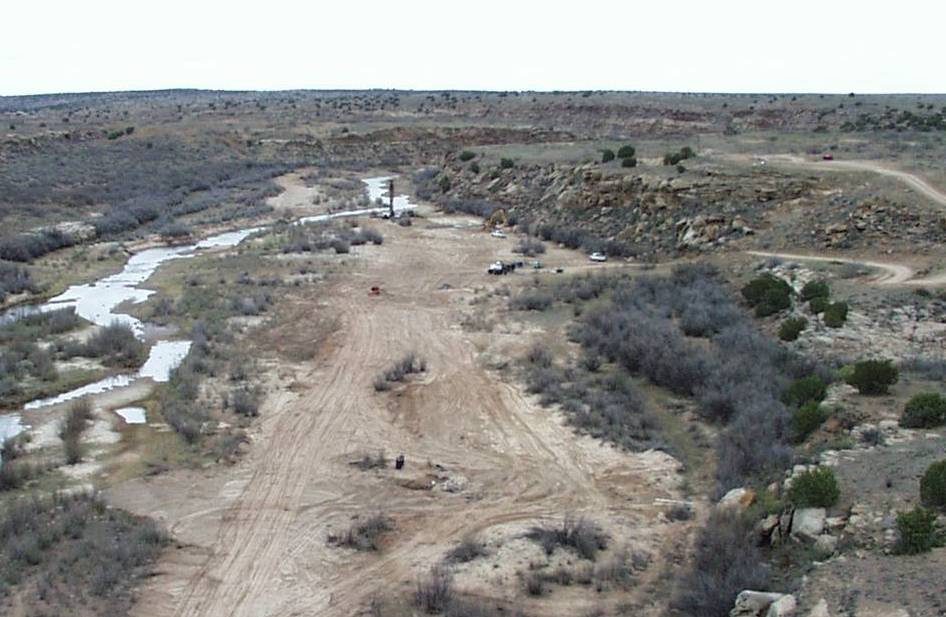
LMSCP Well Construction in River Bottom
2002: In January, a Resolution was adopted establishing the firm yield of Lake Meredith as 76,000 acre-feet per year, with another 40,000 acre-feet normally available from the Ground Water Supply Project. A summary judgment was issued in favor of CRMWA in the Takings Impact Assessment suit filed in 2001. The protests against issuance of the Mesa group’s permits were withdrawn when the applicants agreed on well locations, spacing, and pumping rates that would minimize damage to CRMWA.
2003: Efforts were initiated to purchase additional groundwater rights. Director Ray Renner, of Lamesa, was honored for 50 years of service to CRMWA.
2004: In January, CRMWA began its’ pursuit to purchase additional water rights from a large group of 130 to 150 landowners in Roberts County representing around 150,000 acres.
2005: Norman Wright (Plainview) elected President, Steve Tucker (Slaton( elected Vice President. In April, after extensive attempts to purchase water rights, contracts began “flooding in” for CRMWA purchases in Roberts County. By the end of 2005, CRMWA had signed contract covering 160,515 acres of water rights at an estimated cost of $50,820,533.
2007: CRMWA had completed its’ water rights pursuit with a total contract acreage of 212,100 acres at a final cost of $76,293,681. With the addition of the recently purchased water rights, CRMWA is now one of the largest water rights holders in the state.
2010: The wellfield expansion was completed with the addition of 15 high capacity wells, making a total of 45 wells available, capable of supplying about 65,000 Acre-feet annually.
2011: CRMWA inked a deal with Mesa Water and Mr. T. Boone Pickens to purchase 211,000 acres of additional water.
2012: Steve Tucker (Slaton) elected President, Richard Ellis (Plainview) elected Vice President. Lake Meredith has been serving member cities with water since 1968, after 44 years the year 2012 will be the first year that no water has been pulled from the lake to help supplement city water supplies.
2013: CRMWA Board of Directors approved a routing study and work up to and including the purchase of pipeline right-of-way for an additional groundwater transmission pipeline. This new line would at least double the current capacity of CRMWA’s groundwater project. The new line will likely do directly from CRMWA’s new wellfield (Phase III) to the Amarillo Regulating Reservoir.
History Links: